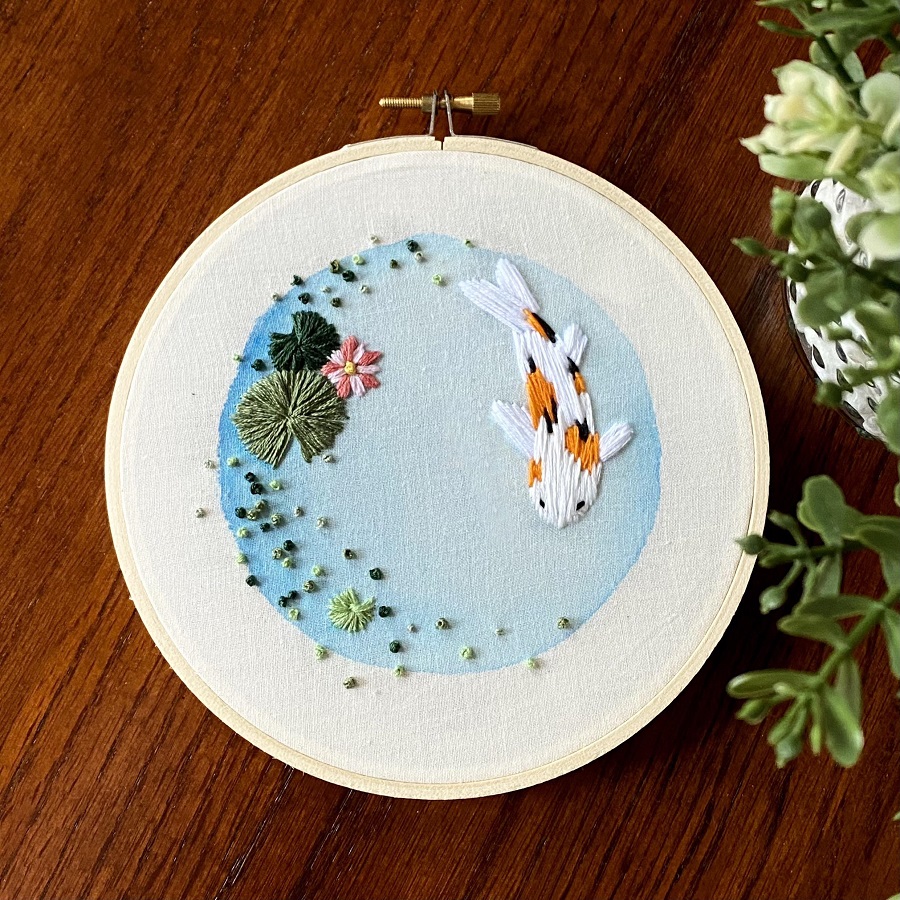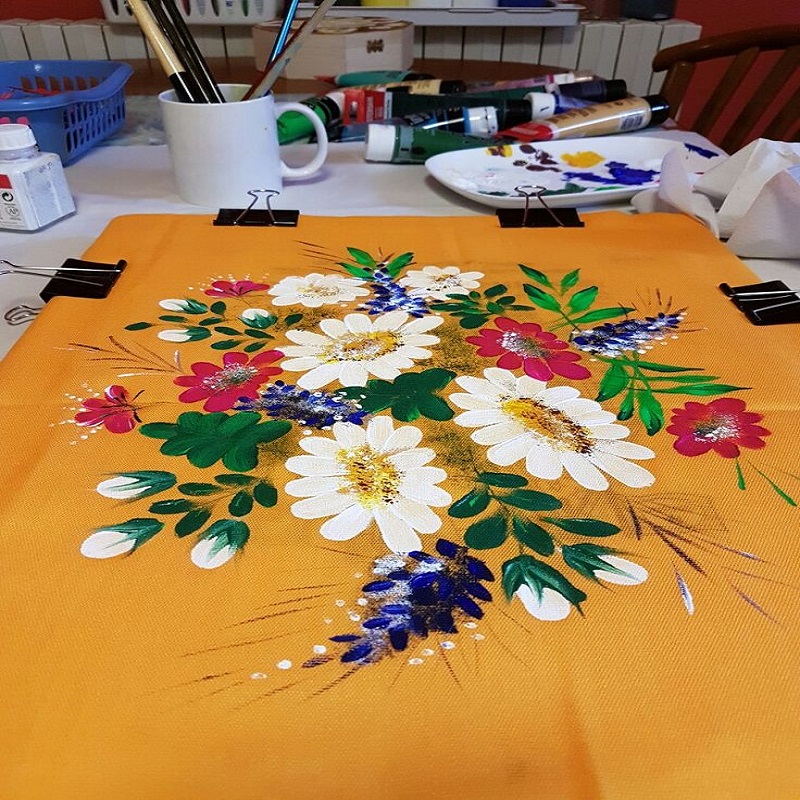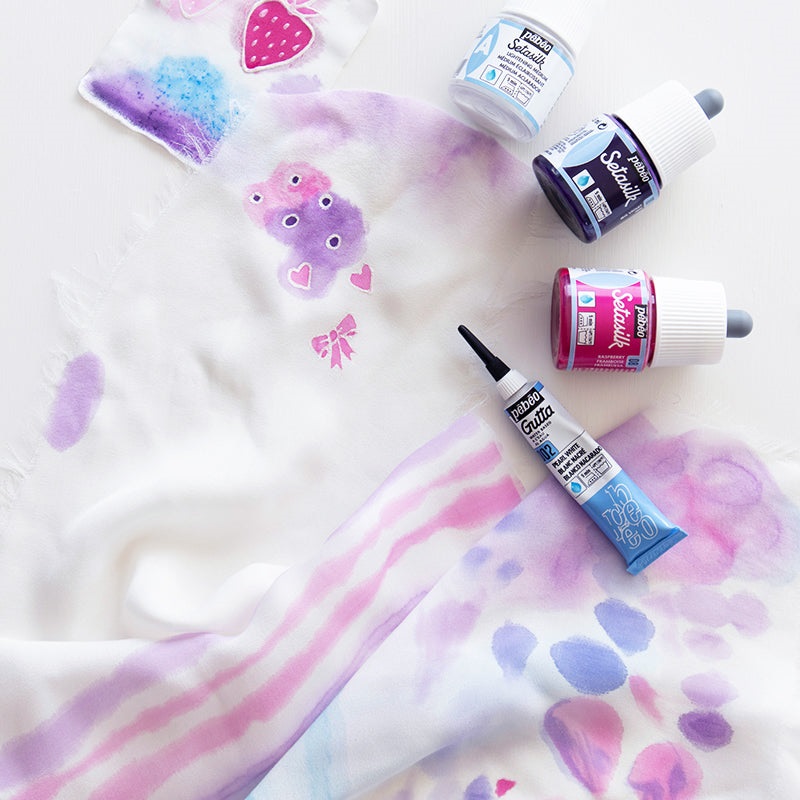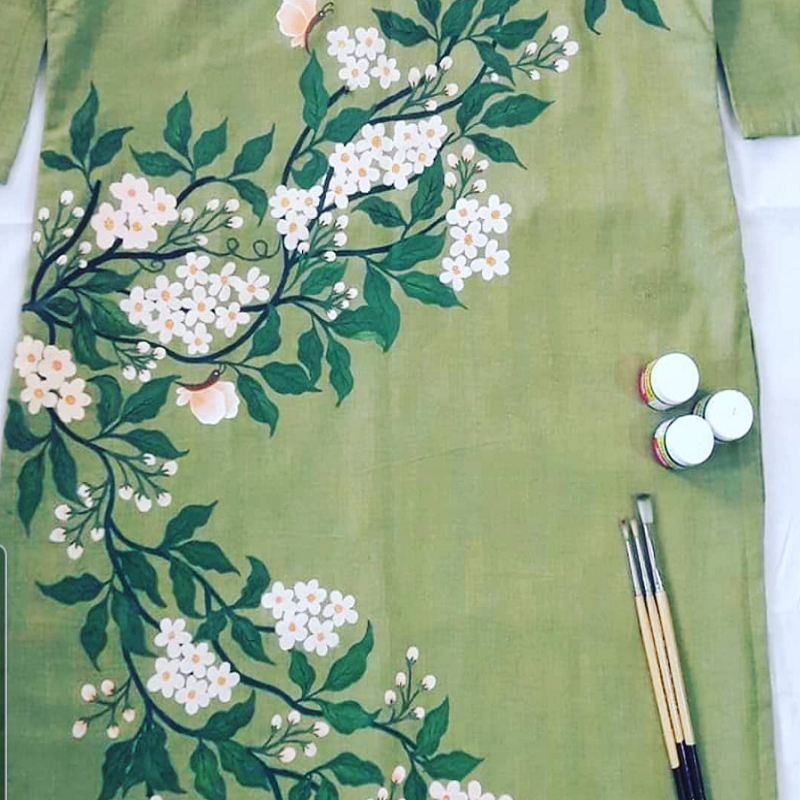Introduction to Fabric Painting
Understanding the Art of Fabric Painting
Fabric painting is a delightful and creative way to personalize garments, home décor, and accessories. This technique allows you to express your artistic flair while transforming plain fabrics into unique pieces of art. Whether you’re looking to revamp an old shirt, create custom gifts, or even design fabric for a special project, fabric painting opens up endless possibilities. The beauty of this craft lies in its accessibility; with just a few materials and techniques, anyone can dive into the world of fabric painting.
Materials Needed for Fabric Painting
Essential Tools and Supplies
Before you start painting on fabric, it’s essential to gather all necessary materials. Having everything ready will streamline the process and make your crafting experience more enjoyable. Here are the key supplies you’ll need:
- Fabric Paints: Choose high-quality paints formulated specifically for fabric. These paints are flexible, water-resistant, and often machine washable once set. Popular brands include Tulip, DecoArt, and FolkArt.
- Brushes: A variety of brushes will give you different effects. Flat brushes are great for covering large areas, while detail brushes are perfect for intricate designs. Foam brushes can also be used for sponge-like effects.
- Palette: A palette will help you mix and blend colors. You can use a traditional artist’s palette, a paper plate, or even a piece of cardboard.
- Fabric: Choose a suitable fabric for your project. Cotton, canvas, and linen work well with most fabric paints. Make sure to pre-wash your fabric to remove any sizing or chemicals that could interfere with paint adhesion.
- Protective Gear: Wear an apron or old clothing, as fabric paints can stain. It’s also wise to use gloves to protect your hands from paint.

Preparing Your Fabric
Washing and Prepping the Material
Preparation is key to achieving the best results when painting on fabric. Start by washing your fabric thoroughly. This step removes any residual chemicals from manufacturing, such as sizing agents that can prevent the paint from adhering properly. Use a mild detergent and avoid fabric softeners, as they can leave a film on the fabric.
After washing, dry the fabric completely. If you’re working with cotton or linen, it’s beneficial to iron the fabric to eliminate any wrinkles. Wrinkles can distort your design and make painting more challenging. Lay your fabric flat on an ironing board and adjust the iron to the appropriate setting for the fabric type. Once ironed, your fabric is ready for the creative process!
Designing Your Project
Sketching and Planning Your Design
Before diving into painting, it’s crucial to plan your design. Take a moment to visualize what you want to create. You can sketch your ideas on paper or directly onto the fabric using a pencil or fabric chalk. For beginners, it might be helpful to start with simple shapes or patterns, gradually progressing to more complex designs as confidence builds.
Consider the size and placement of your design. If you are painting on a shirt, think about whether the design will be centered, offset, or wrap around to the back. For bags or home décor items, consider how the design interacts with the structure of the item. Using a measuring tape can help ensure your design is proportionate and well-placed.
Painting Techniques
Methods to Apply Paint on Fabric
Once you have your fabric prepared and your design sketched out, it’s time to explore various painting techniques. Different methods yield different effects, allowing for versatility in your artwork. Here are some popular techniques to consider:
- Brushing: The most straightforward technique involves using brushes to apply paint directly onto the fabric. This method is excellent for detailed work and allows for precise control over color application.
- Sponge Painting: For a textured effect, you can use a sponge to apply paint. Dip the sponge into the paint and dab it onto the fabric. This technique works well for creating backgrounds or abstract designs.
- Spray Painting: Fabric spray paints offer a unique way to cover large areas quickly. Mask off sections of your fabric to create interesting patterns or gradients. Be sure to work in a well-ventilated area when using spray paints.
- Stamping: Create your own stamps using foam, potatoes, or other materials. Dip the stamp in paint and press it onto the fabric to create repeating patterns. This method is fun and allows for quick application.
- Doodle Technique: For a whimsical touch, consider using fabric pens or markers to doodle over your painted designs. This approach adds intricate details and personal flair to your artwork.
Experimenting with these techniques can lead to discovering your unique style. Don’t hesitate to combine methods for added creativity!

Setting the Paint
Ensuring Durability and Longevity
After completing your painting, it’s essential to set the paint to ensure it adheres properly and remains vibrant through washing. The setting process can vary depending on the type of paint used, but generally involves heat-setting the design. Here’s how to do it effectively:
- Allow the Paint to Dry: Before setting the paint, allow your fabric to dry completely. This may take several hours, depending on the thickness of the paint application and the ambient temperature.
- Heat-Setting: Place a clean cloth or parchment paper over your painted design. Set your iron to the appropriate temperature for the fabric type and press down firmly for 20-30 seconds. Do not move the iron back and forth; simply press down to avoid smudging.
- Cooling: Allow the fabric to cool completely before handling it. This cooling period helps the paint bond with the fibers, enhancing durability.
- Washing Instructions: After setting the paint, it’s advisable to wait at least 72 hours before washing your newly painted fabric. When you do wash it, opt for cold water and a gentle cycle to preserve the design.
By following these steps, you can ensure that your fabric painting projects are long-lasting and resistant to everyday wear.
Troubleshooting Common Issues
Overcoming Challenges in Fabric Painting
Even experienced crafters encounter challenges when painting on fabric. However, most issues can be resolved with a little knowledge and practice. Here are some common problems and their solutions:
- Paint Bleeding: If your paint bleeds outside the intended lines, it could be due to excessive dilution or using too much water. To fix this, try using a thicker paint or a fabric medium designed for mixing with acrylics. Always test on a scrap piece of fabric first.
- Cracking Paint: If the paint cracks after drying, it may be because it was applied too thickly or not heat-set correctly. Ensure you apply thin layers and follow the heat-setting instructions carefully.
- Fading Colors: To prevent fading, always use high-quality fabric paints and set your design properly. Avoid exposing your painted items to direct sunlight for prolonged periods, as this can cause colors to fade.
- Scratches and Scrapes: If your painted design gets scratched or scraped, consider reapplying a small amount of paint to touch up the affected areas. If necessary, reheat-set these areas to restore their durability.
Being aware of these common issues allows you to proactively address them, ultimately leading to a more satisfying crafting experience.

Creative Ideas for Fabric Painting Projects
Inspiring Projects for All Skill Levels
With your newfound knowledge of fabric painting, it’s time to get inspired! Below are some creative project ideas that cater to various skill levels:
- Personalized T-Shirts: Design custom t-shirts for yourself or as gifts. Consider creating a unique graphic or quote using fabric paint. This project is perfect for beginners and can be tailored to any occasion.
- Decorative Pillows: Transform plain throw pillows into statement pieces for your home. Use bold colors and dynamic patterns to create a vibrant focal point in any room.
- Canvas Bags: Create eco-friendly tote bags by painting fun designs or meaningful messages. This is a great way to promote sustainability while expressing your style.
- Baby Onesies: For those with little ones, painting on baby onesies can be both practical and adorable. Create playful designs that celebrate milestones like birthdays or holidays.
- Wall Hangings: If you’re feeling adventurous, consider painting large pieces of fabric to hang on walls. This creates personalized home décor that showcases your artistic talent.
No matter which project you choose, let your creativity flow and enjoy the process of bringing your ideas to life.
Caring for Your Painted Fabrics
Maintenance Tips for Longevity
To ensure that your painted fabrics remain beautiful over time, proper care is essential. Here are some maintenance tips to keep your creations looking their best:
- Washing: As mentioned earlier, always wash your painted fabrics in cold water using a gentle cycle. Avoid bleach and harsh detergents that can fade colors and harm the fabric.
- Drying: Air-drying is the safest option for painted items. If you must use a dryer, opt for low heat to minimize the risk of damaging the paint.
- Ironing: When ironing painted fabrics, always place a cloth between the iron and the painted surface. This protects the paint from direct heat, reducing the risk of melting or smudging.
- Storage: Store your painted items in a cool, dry place away from direct sunlight. This prevents fading and keeps the fabric in good condition.
By following these care instructions, you can extend the life of your fabric paintings and enjoy them for years to come.
Conclusion: Embrace Your Creativity
The Joy of Fabric Painting
Fabric painting is a rewarding and enjoyable craft that allows you to explore your creativity while producing beautiful, personalized items. With the right materials, techniques, and a bit of practice, you can create stunning designs that showcase your unique style.









